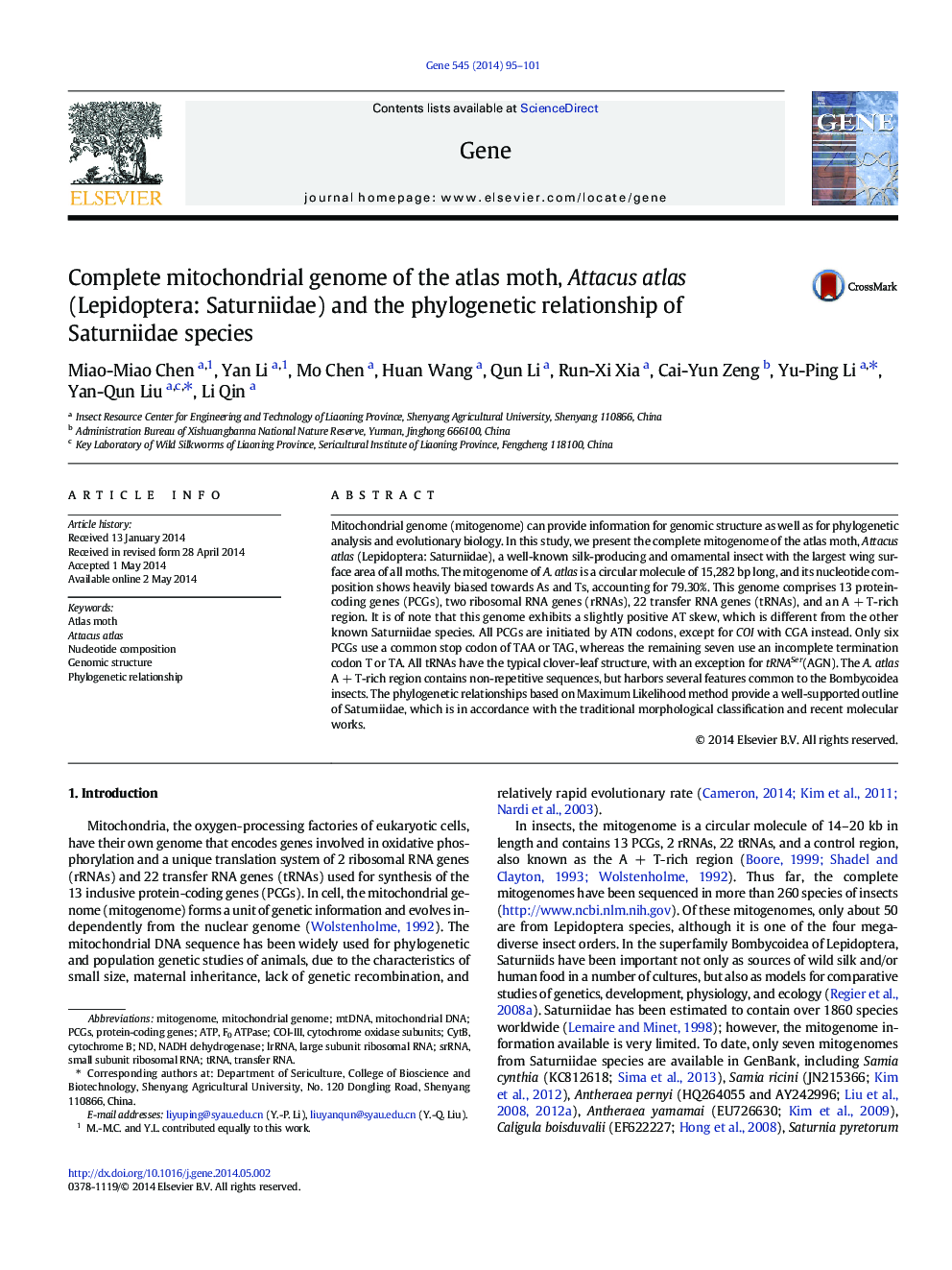| Article ID | Journal | Published Year | Pages | File Type |
|---|---|---|---|---|
| 2816410 | Gene | 2014 | 7 Pages |
•The mitogenome of Attacus atlas was determined.•The mitogenome exhibits a different AT skew from the other Saturniidae species.•We confirm the sister group relationship between Saturniini and Attacini.
Mitochondrial genome (mitogenome) can provide information for genomic structure as well as for phylogenetic analysis and evolutionary biology. In this study, we present the complete mitogenome of the atlas moth, Attacus atlas (Lepidoptera: Saturniidae), a well-known silk-producing and ornamental insect with the largest wing surface area of all moths. The mitogenome of A. atlas is a circular molecule of 15,282 bp long, and its nucleotide composition shows heavily biased towards As and Ts, accounting for 79.30%. This genome comprises 13 protein-coding genes (PCGs), two ribosomal RNA genes (rRNAs), 22 transfer RNA genes (tRNAs), and an A + T-rich region. It is of note that this genome exhibits a slightly positive AT skew, which is different from the other known Saturniidae species. All PCGs are initiated by ATN codons, except for COI with CGA instead. Only six PCGs use a common stop codon of TAA or TAG, whereas the remaining seven use an incomplete termination codon T or TA. All tRNAs have the typical clover-leaf structure, with an exception for tRNASer(AGN). The A. atlas A + T-rich region contains non-repetitive sequences, but harbors several features common to the Bombycoidea insects. The phylogenetic relationships based on Maximum Likelihood method provide a well-supported outline of Saturniidae, which is in accordance with the traditional morphological classification and recent molecular works.
Graphical abstractFigure optionsDownload full-size imageDownload high-quality image (126 K)Download as PowerPoint slide
